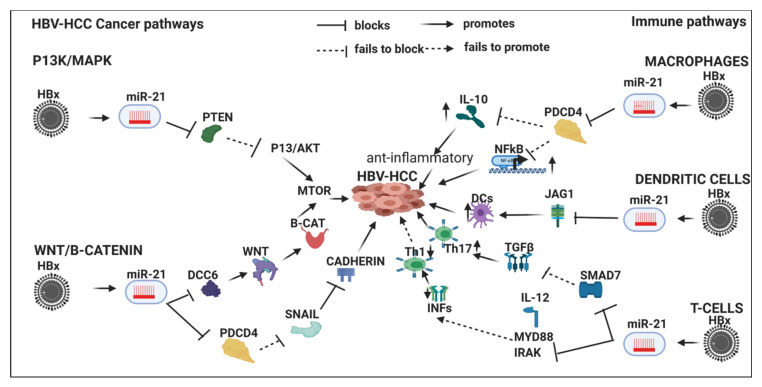Figure 4.
HBx-induced MiR-21 in HBV-HCC immune pathways: In the P13K/MAPK pathway this HBx-upregulated miRNA also promotes HCC by upregulating mTOR signaling via repressing PTEN; in the WNT/β-Catenin pathway, it promotes the onco-protein β-Catenin by regulating a suppressor of WNT signaling, as well as by repressing CADHEREN via reducing PDCD4 modulation of SNAIL which acts as a repressor of CADHEREN. In macrophages, this upregulated miRNA exerts a pro and anti-inflammatory influence by repressing PDCD4. In the first case, the repression of PDCD4 reduces its own repressive of pro-inflammatory NF-κB led signaling, in the second case the repression of PDCD4 stimulates the upregulation of the anti-inflammatory IL-10; this upregulated miRNA can increase DC output by repressing JAG1; in T-cells, this miRNA can promote Th17 expression by suppressing SMAD7, which is a negative regulator of TGFβ, as well as reduce Th1:Th2 ratio by targeting IL-12 induction of INFs to promote Th1.

